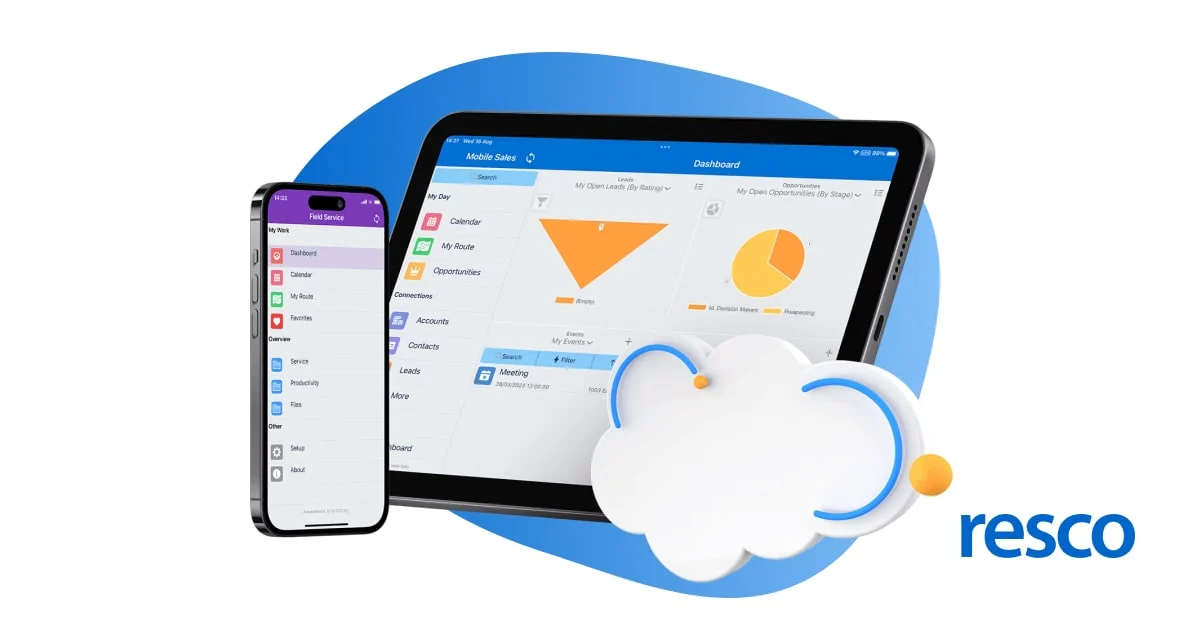Securing cloud-based software is not merely about implementing strong passwords it is a multifaceted challenge that demands a comprehensive approach. SaaS security posture management (SSPM) is essential for addressing the complexities of securing cloud applications. This encompasses user access management, configuration oversight, and the integration of multiple platforms, all of which play a pivotal role in protecting sensitive data.
Toc
- 1. Understanding the SaaS Security Landscape and its Risks
- 2. Key Components of Effective SaaS Security Posture Management
- 3. Related articles 01:
- 4. Implementing and Integrating SaaS Security Posture Management Tools
- 5. Addressing Compliance and Regulatory Requirements with SSPM
- 6. Related articles 02:
- 7. SSPM vs. Other Cloud Security Solutions: CASB and CSPM
- 8. Future Trends in SaaS Security Posture Management
- 9. Conclusion
Understanding the SaaS Security Landscape and its Risks

The adoption of Software as a Service (SaaS) applications has skyrocketed, leading to innovative possibilities but also expanding the attack surface for organizations. This growth amplifies the risk of data breaches and security vulnerabilities. Misconfigurations, often cited as leading causes of data breaches, and insider threats present significant challenges.
Traditional security strategies, primarily focused on perimeter defenses, are inadequate for the unique risks posed by SaaS applications. Organizations migrating to the cloud must adopt strategies that include continuous monitoring and assessment of their SaaS environments. Insights from SaaS Security Posture Management Gartner indicate that robust SSPM practices are fundamental to modern cloud security strategies.
Key Components of Effective SaaS Security Posture Management
Comprehensive Visibility and Inventory Management

A core component of effective SaaS security posture management is achieving comprehensive visibility across all SaaS applications in use. Organizations must maintain a detailed inventory of these applications, documenting user access levels and configuration settings. This transparency is crucial for mitigating risks associated with shadow IT, where unauthorized applications may operate outside the IT department’s awareness.
Identifying shadow IT poses significant challenges, particularly with the use of personal email accounts for work-related tasks and unsanctioned collaboration tools. For instance, a notable data breach occurred when employees utilized personal cloud storage solutions to share sensitive company data, bypassing established security protocols. Such incidents underscore the necessity for organizations to implement effective monitoring and inventory management strategies.
SSPM tools automate the discovery and management of SaaS application inventories, streamlining this process. By providing real-time insights into application usage and configurations, security teams can proactively identify potential threats and ensure compliance with internal security policies.
Risk Assessment and Continuous Monitoring
Risk assessment forms another critical aspect of SSPM. Tools designed for SaaS security posture management evaluate the security configurations of various applications against established benchmarks. These assessments consider multiple criteria, including user permissions and integration risks, generating risk scores that help prioritize remediation efforts.
Regular vulnerability scanning and penetration testing are essential within the context of SSPM. Tools such as Nessus and OpenVAS are commonly used for vulnerability scanning, while Burp Suite and Metasploit are popular for penetration testing. These practices enable organizations to identify and address vulnerabilities before they can be exploited.
Continuous monitoring is vital for maintaining a robust security posture. Automated alerts for configuration drift ensure that any deviations from secure settings are promptly identified and addressed. However, it’s important to recognize the limitations of automated risk assessments. The interpretation of results often requires human expertise to make informed decisions, as automated systems can generate false positives and may lack the context necessary for appropriate responses.
1. https://genie.com.vn/mmoga-mastering-azure-iaas-paas-and-saas-a-cloud-architects-guide/
2. https://genie.com.vn/mmoga-wordpress-cloud-hosting-the-ultimate-guide-for-e-commerce/
4. https://genie.com.vn/mmoga-secure-cloud-hosting-services-the-smb-guide/
5. https://genie.com.vn/mmoga-the-best-online-email-hosting-for-small-businesses-in-2024/
Policy Enforcement and Automated Remediation
SSPM empowers organizations to establish and enforce security policies across their SaaS applications. This capability is crucial for maintaining consistent security standards throughout the organization. Automated remediation features, such as automatic patching and configuration adjustments, streamline the process of addressing identified vulnerabilities.
Integrating SSPM with existing security tools, such as Cloud Access Security Brokers (CASB) and Security Information and Event Management (SIEM) solutions, enhances the overall security framework. This integration allows for a more cohesive approach to threat detection and response, ensuring that security teams can act swiftly and effectively.
Implementing and Integrating SaaS Security Posture Management Tools
Choosing the Right SSPM Vendor

Selecting the right SaaS security posture management tools is vital for any organization. Key factors to consider include the organization’s specific security needs, budget constraints, and required support levels. Leading SSPM vendors , such as SaaS Security Posture Management Zscaler and SaaS Security Posture Management Palo Alto, offer a variety of features tailored to different organizational sizes and requirements.
For example, Microsoft Purview and Palo Alto Networks Prisma Cloud are two leading SSPM solutions that provide extensive capabilities. Microsoft Purview emphasizes automated remediation capabilities and seamless integration with Microsoft 365, while Palo Alto Networks Prisma Cloud offers advanced threat detection features and robust compliance management tools. A thorough comparison of features and pricing models among leading vendors can assist organizations in selecting the best SSPM solution for their needs.
Integration Strategies
Integrating SSPM with existing security tools can significantly enhance overall security effectiveness. For instance, combining SSPM with CASB solutions allows organizations to enforce security policies while monitoring application usage. Additionally, integration with SIEM tools provides a centralized view of security events, enabling more efficient incident response.
Organizations should also consider the pros and cons of commercial versus SaaS security posture management open source solutions. While commercial products typically offer comprehensive support and features, open-source options can be cost-effective for smaller organizations or those with specific customization needs. Exploring examples of open-source tools can help determine their fit within an organization’s security strategy.
Addressing Compliance and Regulatory Requirements with SSPM
Compliance with industry standards is a critical aspect of SaaS security posture management. Frameworks such as CIS, NIST, HIPAA, and GDPR provide essential guidelines that organizations must follow to protect sensitive data. SSPM tools assist organizations in demonstrating compliance by continuously monitoring their security posture against these benchmarks, thus simplifying the audit process.
Maintaining compliance not only protects sensitive information but also enhances an organization’s reputation and trustworthiness among clients and stakeholders. Best practices for documenting and managing compliance evidence are vital for ensuring readiness for audits.
Mitigating Threats and Reducing the Attack Surface
SSPM plays a vital role in identifying and mitigating vulnerabilities within SaaS applications. By proactively managing security configurations and user access, organizations can significantly reduce their attack surface. This proactive approach not only minimizes the risk of breaches but also fosters a culture of security awareness within the organization.
Best Practices for Implementing SSPM
Implementing a robust SSPM strategy requires careful planning and execution. Organizations should begin by assessing their current security posture and identifying gaps in their SaaS application management. A step-by-step guide for implementing SSPM includes selecting the right tools, integrating them with existing systems, and continuously monitoring the security environment.
Establishing clear policies and procedures for managing SaaS applications is also vital. Training staff on security best practices and ensuring ongoing communication between departments can further enhance the effectiveness of SSPM efforts.
1. https://genie.com.vn/mmoga-secure-cloud-hosting-services-the-smb-guide/
2. https://genie.com.vn/mmoga-the-best-online-email-hosting-for-small-businesses-in-2024/
3. https://genie.com.vn/mmoga-wordpress-cloud-hosting-the-ultimate-guide-for-e-commerce/
4. https://genie.com.vn/mmoga-mastering-azure-iaas-paas-and-saas-a-cloud-architects-guide/
SSPM vs. Other Cloud Security Solutions: CASB and CSPM
Understanding the Differences

Differentiating SSPM from other cloud security solutions, particularly Cloud Access Security Brokers (CASB) and Cloud Security Posture Management (CSPM), is essential. While both SSPM and CASB address security concerns within SaaS environments, they serve different purposes. CASBs focus on protecting sensitive data by enforcing security policies during cloud service access, while SSPM concentrates on the continuous assessment of SaaS applications’ configurations and security postures.
CSPM, on the other hand, is geared toward securing Infrastructure as a Service (IaaS) and Platform as a Service (PaaS) environments. Each solution is tailored to meet the specific security needs of its respective cloud environment, making it crucial for organizations to understand which approach best suits their operational landscape.
Benefits of Integration
When used together, SSPM and CASB can provide a comprehensive security solution. SSPM identifies vulnerabilities and misconfigurations, while CASB enforces security policies, offering an integrated approach to safeguarding sensitive data. Organizations can enhance their security frameworks by leveraging the strengths of each solution.
Future Trends in SaaS Security Posture Management
Emerging Technologies
As the digital landscape evolves, so too will strategies for managing SaaS security. The increasing use of AI and machine learning in SSPM solutions for threat detection and response is one such trend. AI-driven features, such as anomaly detection and predictive analytics, are being integrated into SSPM tools, enabling organizations to proactively identify potential threats and respond more effectively.
The Role of SSPM in Multi-Cloud Environments
In an era of expanding multi-cloud environments, the role of SSPM will be crucial in helping organizations navigate the complexities of cloud security. By staying ahead of emerging threats and adopting innovative technologies, organizations can ensure that their SaaS applications remain secure and compliant.
Zero Trust Architecture
The adoption of zero-trust security models is on the rise, influencing how organizations approach SSPM. Zero trust principles dictate that no user or system should be trusted by default, necessitating continuous verification and monitoring of all access attempts. SSPM tools can help enforce these principles by ensuring that security configurations and user permissions are regularly assessed and validated.
Continuous Learning and Adaptation
Organizations must embrace a mindset of continuous learning and adaptation to effectively combat evolving cyber threats. This includes staying informed about new vulnerabilities, regulatory changes, and best practices in SaaS security posture management.
Conclusion
In conclusion, mastering SaaS security posture management is essential for organizations looking to protect their cloud environments from evolving threats. By understanding the key components of effective SSPM, differentiating it from other security solutions, and implementing best practices, organizations can significantly enhance their security posture. As cyber threats continue to evolve, embracing robust SSPM strategies will be critical for safeguarding sensitive data and maintaining compliance in a complex digital landscape.
Consider investing in a comprehensive SSPM solution today to protect your organization’s valuable data and reputation. With the right tools and strategies in place, you can navigate the challenges of SaaS security and ensure a secure future for your organization.











